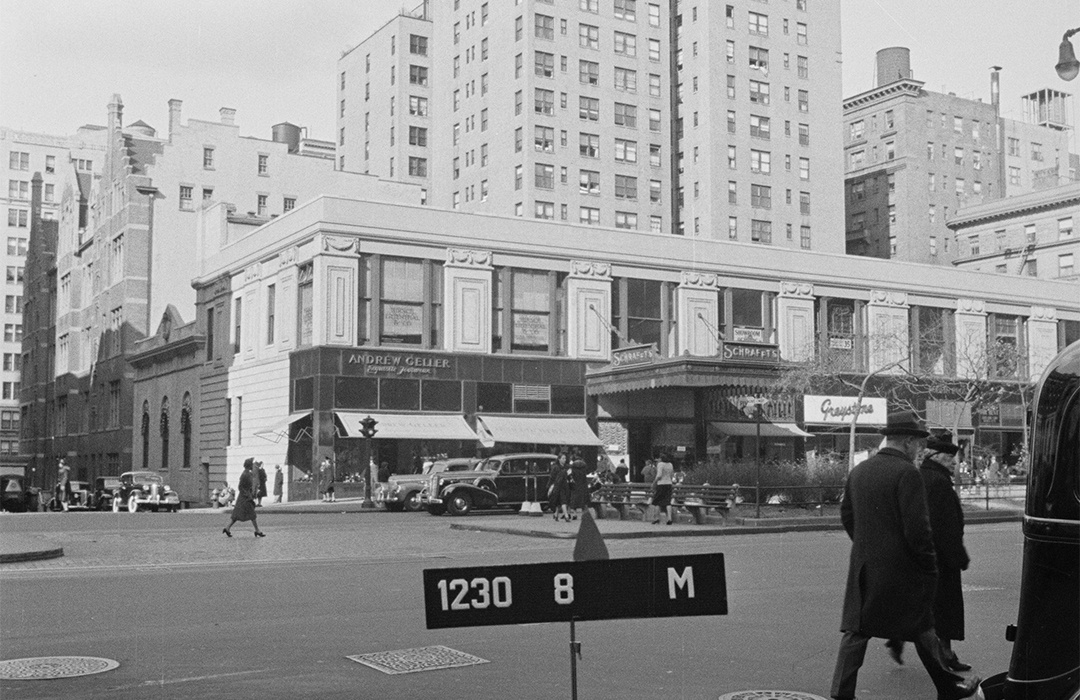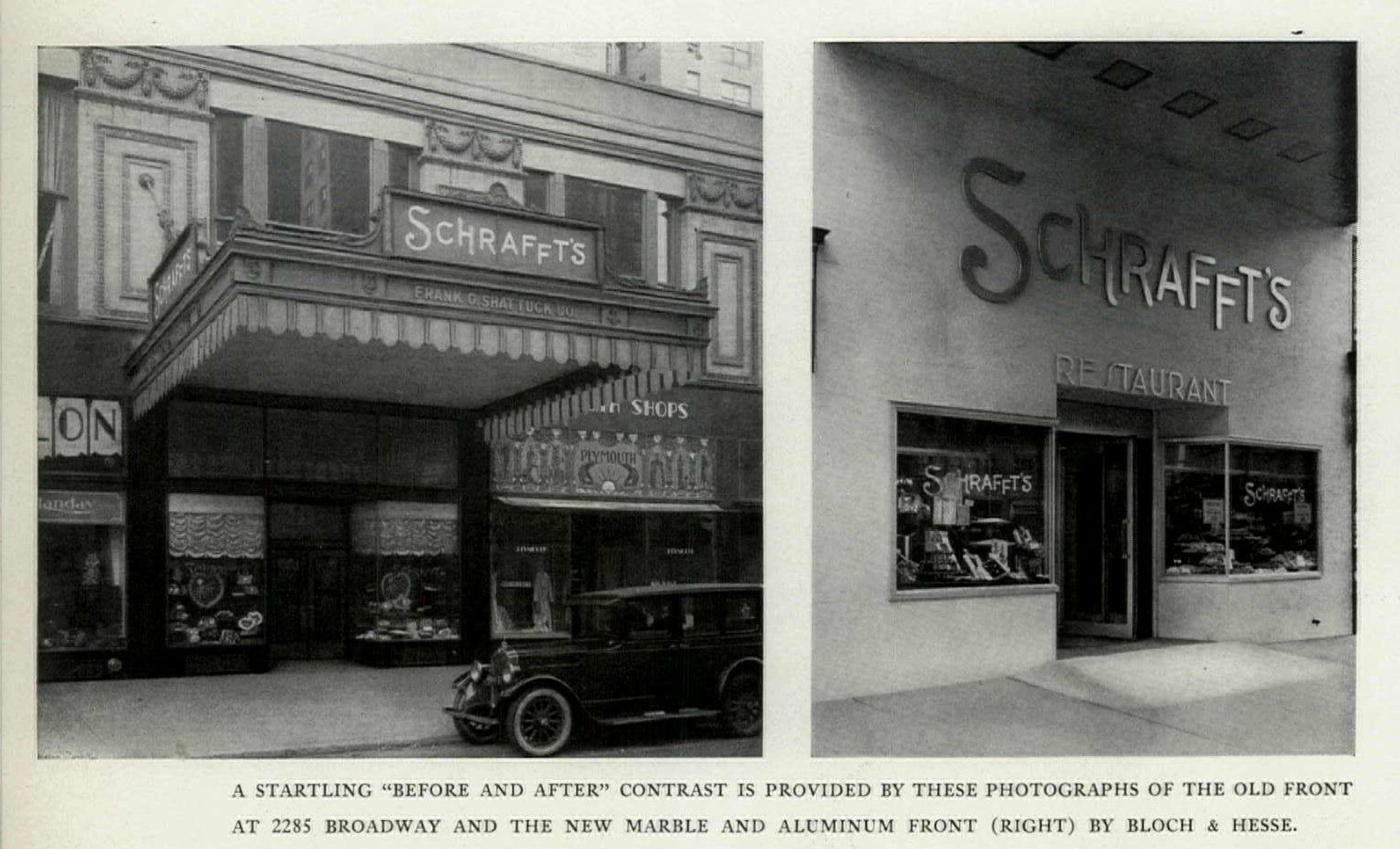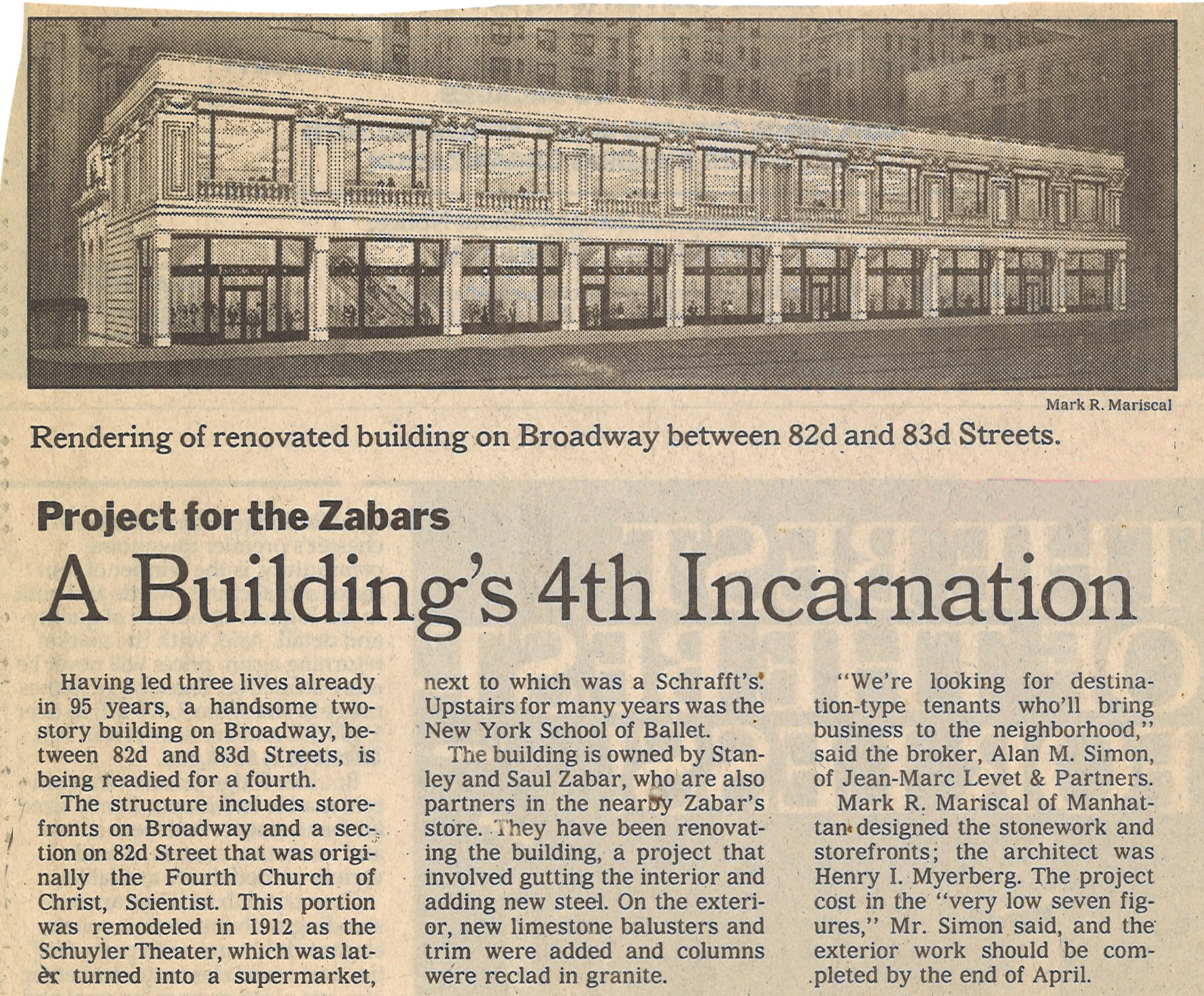
2281-2299 Broadway
by Tom Miller
In 1898 developer John O. Baker began construction on a two-story office building designed by William Strom that would engulf the entire Broadway blockfront between 82nd and 83rd Streets. Known as taxpayers, such low-rise buildings were normally intended to be relatively temporary. They garnered enough rental income to cover the property taxes until a more permanent structure was erected.
The building was initially filled with offices related to the construction or real estate industry. Among the original upstairs tenants were the offices of at least three well-known architects—Hugh Lamb, Joseph Ireland, and Clarence True. By 1903 the architectural firm of Turner & Kilian had its office here. The Fireproof Dwelling Company and The Realty Improvement Co., both construction firms, were initial tenants, as was the development and building firm Stewart & Smith.
Shortly after moving in, The Fireproof Dwelling Company experienced a disastrous accident. It was erecting a nine-story apartment building, designed by co-tenant Hugh Lamb, on 81st Street near West End Avenue. On August 8, 1899, seven stories had been completed. Lamb was on the job site, watching a three-ton beam being hoisted to the eighth floor. The New York Press reported, “The end had been pushed inside of the walls when one of the men at the guy rope let it slip.”
The massive beam swung to the side, crashed into the wall, and then plunged to the street with a “crash heard for several blocks.” The article said, “A stone weighing 500 pounds dropped in front of Mr. Lamb, the architect.” A large section of wall collapsed, injuring one man. Otherwise, no one was hurt. The New York Press remarked, “How those in the building missed being killed cannot be explained.”
Perez M. Stewart and H. Ives Smith, who made up the firm of Stewart & Smith, were known for the high-end speculative residences they erected on the Upper West Side. On October 6, 1901, for instance, the partners announced they “are now finishing five splendid residences at the southeast corner of 106th st. and Riverside Drive.” The sumptuous nature of the five-story mansions was evidenced in the servants’ dining rooms, the elevators, and the billiard rooms.
The massive beam swung to the side, crashed into the wall, and then plunged to the street…
It was not until about 1902 that shops appeared at ground level. Among the first was the Rio Grand Laundry in 2289 Broadway, and by 1904 were Henry F. Natemeyer’s grocery store, Harry Hoffmeier’s florist shop, and W. J. Lohrueon’s candy shop. A year later, Godfrey A. S. Weiners moved his bookstore to 2283 Broadway.
In 1905 John O. Baker leased one of the second-floor spaces to Harvey & Wright, which opened an art gallery and store. On the day after Christmas that year, a fire broke out in the space, gutting it. The origin of the blaze was not determined at the time, and because the owners had no insurance on the furnishings nor inventory, arson was ruled out.
Four years later, in July 1909, James Hunter Wright walked into District Attorney Jerome’s office. The New York Times reported that he “said his conscience hurt him and that he wished to be punished for having set fire to his art store at No. 2299 Broadway on December 26, 1905.” His initial excuse was that “business was bad and I wanted to try something new.”
But, in truth, Wright was a serial arsonist. After burning the Broadway store, he moved to Providence, Rhode Island, where he opened a store. He set fire to that store within a few months. On July 24, The New York Times revealed, “He did the same in a small town in Quebec. Then he went to Spokane Wash., and again set fire to his store. Next, he settled in Amesbury, Mass., and again when he had been in business a few months, applied a match to it.” Now, back in New York, he was “stricken with remorse.” He was sentenced to a year in Sing Sing prison for the Broadway arson.
In the meantime, the offices within John O. Baker’s building continued to house firms in the construction and real estate industry. In 1904 the Pease & Elliman real estate offices opened here, joined by contractor Victor Heating Co. and the John F. Sayward Co., engineers and contractors by 1908.
The ground floor shops housed a variety of tenants. In 1911 Haas, which sold “smart women’s wear,” was in 2281 Broadway; the Carolyn Laundry was in 2289; and Reynolds Liquor store was located in 2295. In 1913 Mme. Morris’s dress shop was at 2297 Broadway. That year The American Cloak and Suit Review said, “At 2297 Broadway Mme. Morris has a most prosperous waist and gown shop. The shop is not, perhaps, quite as large, as regards floor space, as many…but the space is utilized cleverly, while the frocks are all hidden away behind mirrored sliding doors at either side.” That year Reynolds Liquor was replaced in 2295 by the similarly named Reynard Fur Co., a retail furrier.
Changes came in 1929 when Schrafft’s restaurant signed a lease for 2285 Broadway. Architect Charles E. Biggee was hired to completely remodel the building. Biggee gave it a 1920s take on a neo-Classical design with paneled brick piers along the second floor capped by terra cotta swags. The second-floor offices were renovated into stores, factory spaces, and an employees’ dining room.
Among the ground floor tenants in the Depression years was Leo Kobrin’s jewelry store at 2291 Broadway. On the night of February 8 that year, Kobrin returned to the store, only to walk in on an armed robbery. Before he could turn and run, one of the two gunmen “had him covered,” as reported by The New York Sun.
While one crook held Kobrin and his three clerks at gunpoint, the other climbed into the show window. The newspaper said, “The evening crowds that walked along Broadway near Eighty-third street last night and saw a man standing in the show window of a jewelry store gathering precious stones and watches, were unaware that he was a robber.” As the pedestrians passed, the thief went about his business. Finally, he stuffed the loot in a bag, signaled to his partner, and the two fled into a waiting car. They made off with $20,000 in jewelry, a haul equal to more than $400,000 in today’s money.
In 1940 Schrafft’s restaurant began an “extensive modernization” project to its space at 2285. Frank M. Shattuck, a member of the board of directors, said, “Both the exterior and interior will be changed. The new front will be of white marble with aluminum metalwork. A new marque will have recessed foliage boxes concealed around the boarders from which greenery will trail over the edges.” He continued:
Inside gold mirrors flanked with fluted pilasters will be back of the soda and candy counter. Modern fluorescent lighting will be employed, and a new entrance of edge-lighted etched glass panels will lead into the dining room. Peach mirrors and a modern treatment of walls and ceiling will be designed to give the dining room a gay atmosphere.
In 1969 the dance studio was taken over by the newly formed New York School of Ballet, founded by dancer Richard Thomas and run by Leigh Welles.
The second floor was also remodeled, and now held Pedro & Olga’s dance studio and a dentist office. Schraft’s was still operating at 2285 Broadway when the building was renovated again in 1956. The School of American Ballet, founded by Russian-born choreographer George Balanchine in 1934, moved into the renovated dance studio. In 1969 Ballanchine and Lincoln Kerstein offered the studio space to the newly formed New York School of Ballet, founded by dancer Richard Thomas and run by Leigh Welles. The Schrafft’s space became a Red Apple Supermarket in 1972.
By then Stanley Zabar, a member of the famous family that operated the food store on Broadway at 80th Street, owned 2281-2299 Broadway. He sold it in 1985 and almost immediately the new owners evicted all the second-floor tenants, including the New York School of Ballet. Protestors focused their wrath on Zabars.
On August 10 the sidewalk outside the Zabar’s store was mobbed with protestors and picket signs. Newsday titled a photograph of the demonstrators “Ballet vs. Bagels” and The New York Times estimated that “more than 100 supporters of the school marched in protest outside the Zabar’s delicatessen.” Among the crowd was City Clerk and future Mayor David Dinkins, State Assemblyman Jerrold Nadler, and City Councilwoman Ruth W. Messinger. Dinkins told The New York Times, “This is a battle to save the arts” and suggested considering the interior of the dance studios for landmark status. The school lost the battle.
In 1993, a Barnes & Noble bookstore moved into the ground floor of 2288 Broadway and the building’s entire second floor. It was the scene of a terrifying robbery on January 30, 2000, when a young couple armed with a gun forced their way into the store before opening. They forced the manager to open the safe and fled with $25,000 in cash, leaving him and the only other employee in the store tied up.
Today Charles E. Biggee’s 1929 remake is, overall, intact. And the building that was most likely intended in 1898 to be temporary has turned out to be anything but.
Tom Miller is a social historian and blogger at daytoninmanhattan.blogspot.com
BUILDING DATABASE
Keep Exploring
Be a part of history!
Think Local First to support the businesses currently at 2281-2299 Broadway:
Meet Ed Park!




